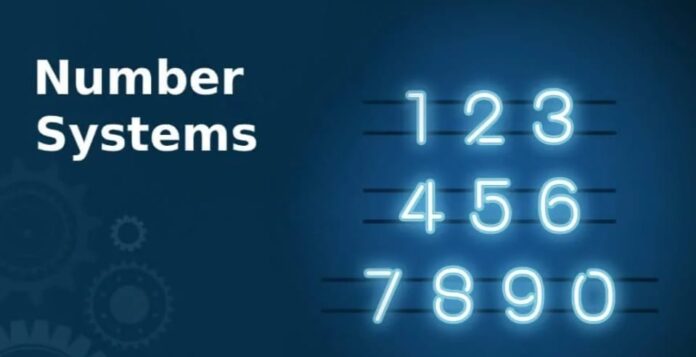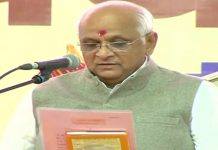Introduction to Number Systems
Number System is the process of representing the numbers on the number line using certain rules and symbols. A number line is a depiction of numbers on a straight line with a specified interval between them. The Number System is used to do mathematical computations ranging from complex scientific calculations to counting the number of chocolates left in the box.
What are Numbers?
Number: Arithmetical value representing a particular quantity. The various types of numbers are Natural Numbers, Whole Numbers, Integers, Rational Numbers, Irrational Numbers, Real Numbers etc.
- Natural Numbers: Numbers which start from one (1) are known as natural numbers. The collection of all natural numbers is denoted by N.
N = {1, 2, 3, 4, …….}
- Whole Numbers: Numbers which start from zero (0) are known as whole numbers. The collection of all whole numbers is denoted by W
or
If ‘0’ is included in the collection of natural numbers, then the collection is known as whole numbers.
W = {0, 1, 2, 3, …}
- Integers: Integers are the numbers that include whole numbers along with negative numbers. An integer is a number from a set of negative and positive numbers, including zero, which has no decimal or fractional value. Z is the symbol for a set of integers.
Z = {…, -3, -2, -1, 0, 1, 2, 3, …}
- Rational Number: A number r is called a rational number, if it can be written in the form p/q, where p and q are integers and q ≠ 0. The collection of rational numbers is denoted by Q.
Some examples of rational numbers include 3/5, 7/2, 11/13, and so on.
- Irrational Number: Any number that cannot be expressed in the form of p/q, where p and q are integers and q≠0, is an irrational number. Examples: √2, 1.010024563…, e, π
To know more about Irrational Numbers, visit here.
Properties of Irrational Numbers
The following are the four properties of irrational numbers:
(i) Negative of an irrational number is an irrational number.
(ii) Sum and difference of a rational and an irrational number is always an irrational number.
(iii) Sum, product and difference of two irrational numbers is either a rational or irrational number.
(iv) Product of a rational number with an irrational number is either rational or irrational.
- Equivalent Rational Number: The rational number whose numerator and denominator both are equal or they are reducible to equal.
e.g., the fraction 2/3 is a rational number. Rational numbers that are equivalent to 2/3 are 4/6, 6/9, and 20/30.
Note: There are infinitely many rational numbers between any two given rational numbers. Symbol √ indicate the square root of the number
e.g., √4 = 2, though both 2 and -2 are square roots of 4.
- Real Numbers: The collection of all rational numbers and irrational numbers together makeup what we call the collection of real numbers, which is denoted by R. Therefore, a real number is either rational or irrational.
Note: Every real number is represented by a unique point on the number line. Also, every point on the number line represents a unique real number.
- Real Numbers and their Decimal Expansions: For all rational of the form (q ≠ 0). On a division of p by q, two main things happen:- either the remainder becomes zero or never becomes zero and we get a repeating string of remainders.
Case I. The remainder becomes zero
In this case, the decimal expansion terminates or ends after a finite number of steps. We call the decimal expansion of such numbers terminating.
e.g., , , , etc.
Case II. The remainder never becomes zero
In this case, we have a repeating block of digits in the quotient, this expansion is called non-terminating recurring.
e.g., = 0.6666…..
= 3.142857142857……..
Note: The decimal expansion of rational number is either terminating or non-terminating recurring. Moreover, a number whose decimal expansion is terminating or non-terminating recurring is rational.
The decimal expansion of an irrational number is non-terminating non-recurring. Moreover, a number whose decimal expansion is non-terminating non-recurring is irrational.
S = 0.10110111011110… (non-terminating and non-recurring).
- Operations on Real Numbers: Rational numbers satisfy the commutative, associative and distributive laws for addition and multiplication. Moreover, if we add, subtract, multiply or divide (except by zero) two rational numbers. We still get a rational number (i.e., rational numbers are ‘closed’ with respect to addition, subtraction, multiplication and division).
Irrational numbers also satisfy the commutative, associated and distributive laws for addition and multiplication. However, the sum, difference, quotients and products of irrational numbers are not always.
e.g., √5 + (-√5) = 0
√15/√15 = 1 are rational.
√3 is irrational.
Hence, (5 + √3) is also irrational (√3 has a non-terminating, non-recurring decimal expansion).
Note: The sum or difference of a rational number and an irrational number is irrational.
The product or quotient of a non-zero rational number with an irrational number is irrational.
If we add, subtract, multiply or divide two irrationals, the result may be rational or irrational.
- Radicand: If is a surd then n is known as order of surd and a is known as radicand.
- Laws of Radicals: Let a and b be positive real numbers. Then,
- √ab = √a √b
- √=
- (√a + √b) (√a – √b) = (a – b)
- (a + √b) (a – √b) = a2 – b
- (√a + √b) (√c + √d) = √ac + √ad + √bc + √bd
- (√a + √b)2 = a + 2√ab + b
- Rationalising the Denominator: When the denominator of an expression contains a term with a square root (or a number under a radical sign), the process of converting it to an equivalent expression whose denominator is a rational number is called rationalising the denominator.
To rationalise the denominator of 1/√a+b it is multiplied by √a−b/√a−b, where a and b are integers.
- Laws of Exponents
- am. an = am+n
(am)n = amn
am / an = am−n, m > n
am bm = (ab)m
Here a, b, n and m are natural numbers. Here, a is called base and m and n are the exponents.



































